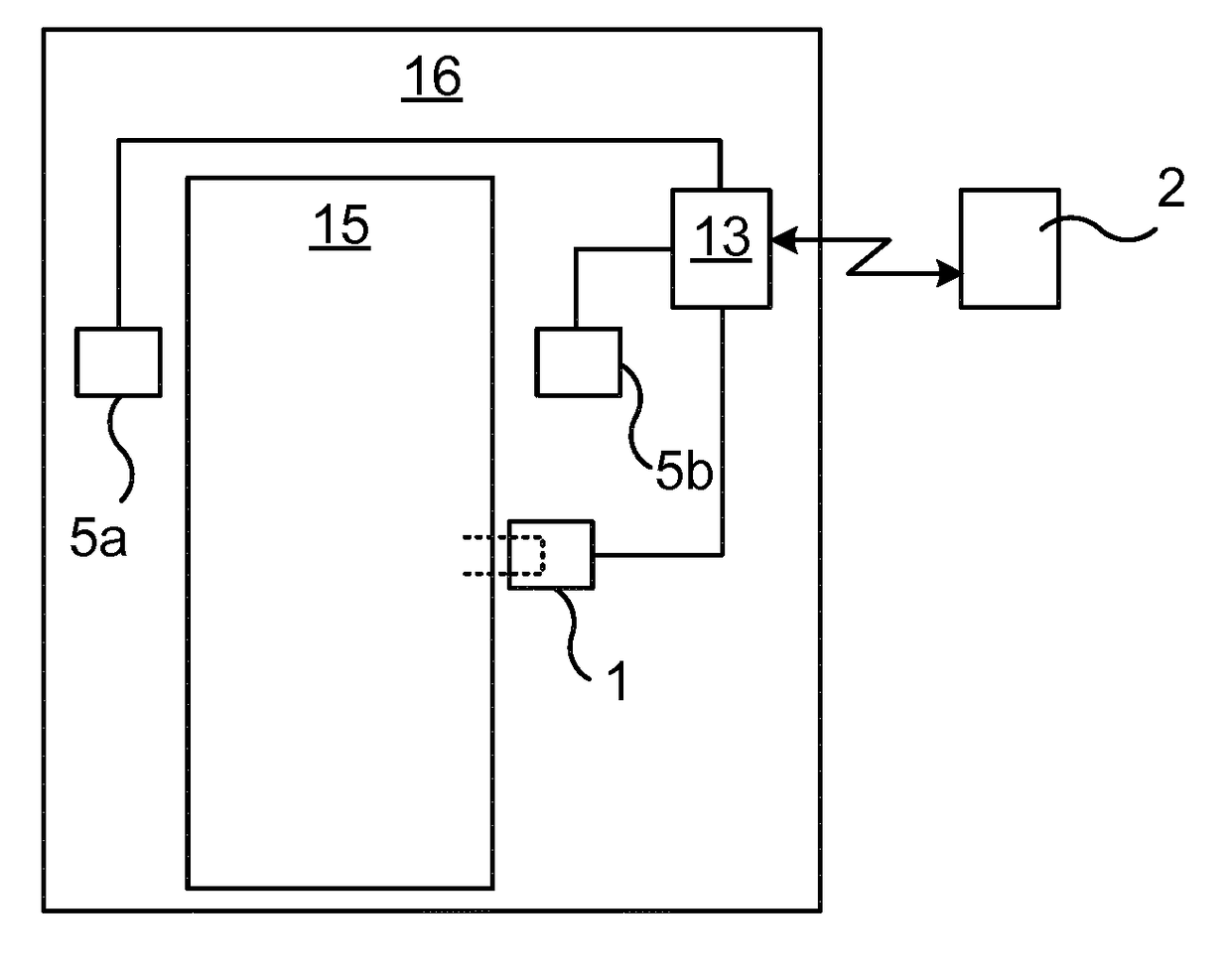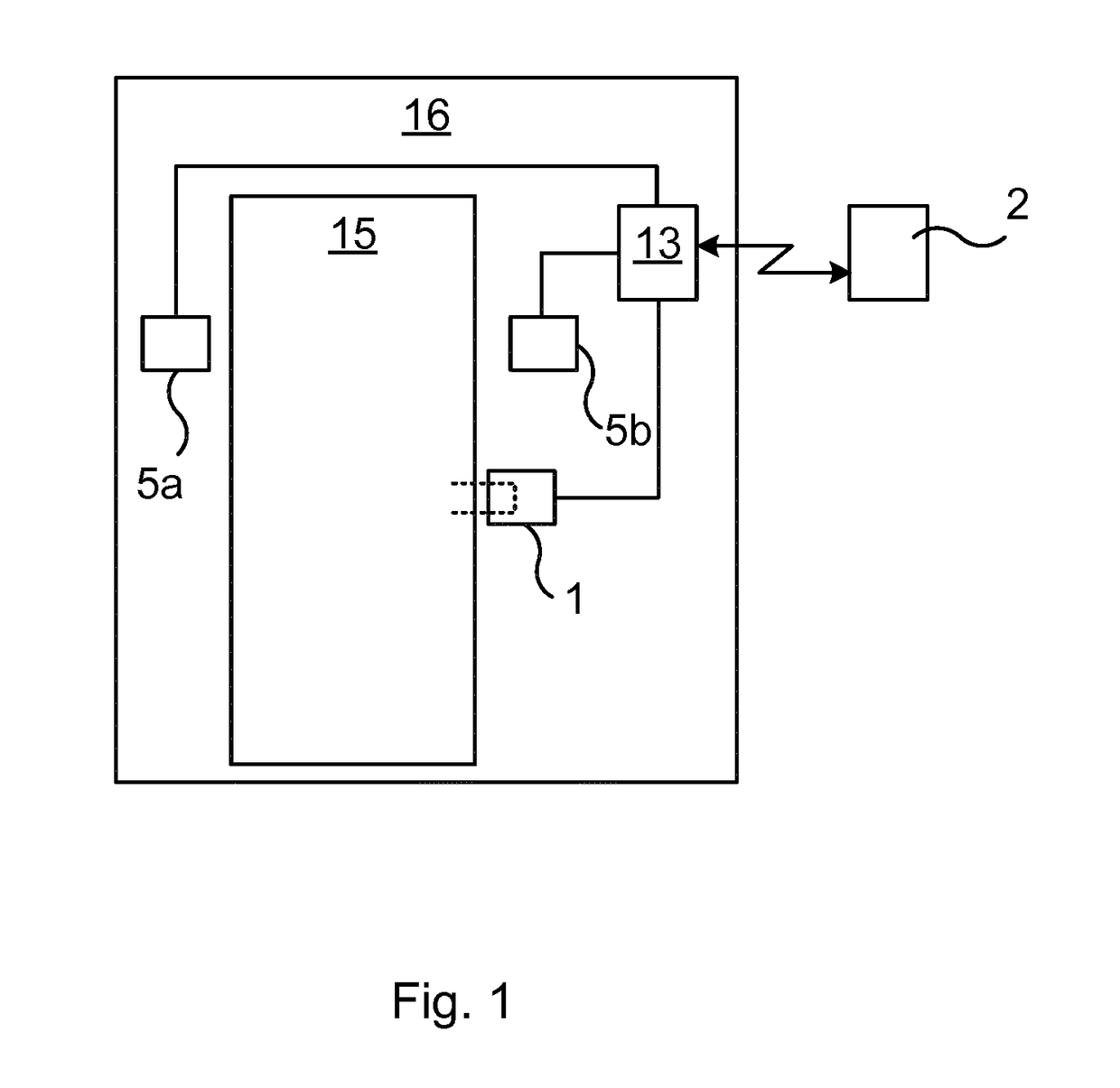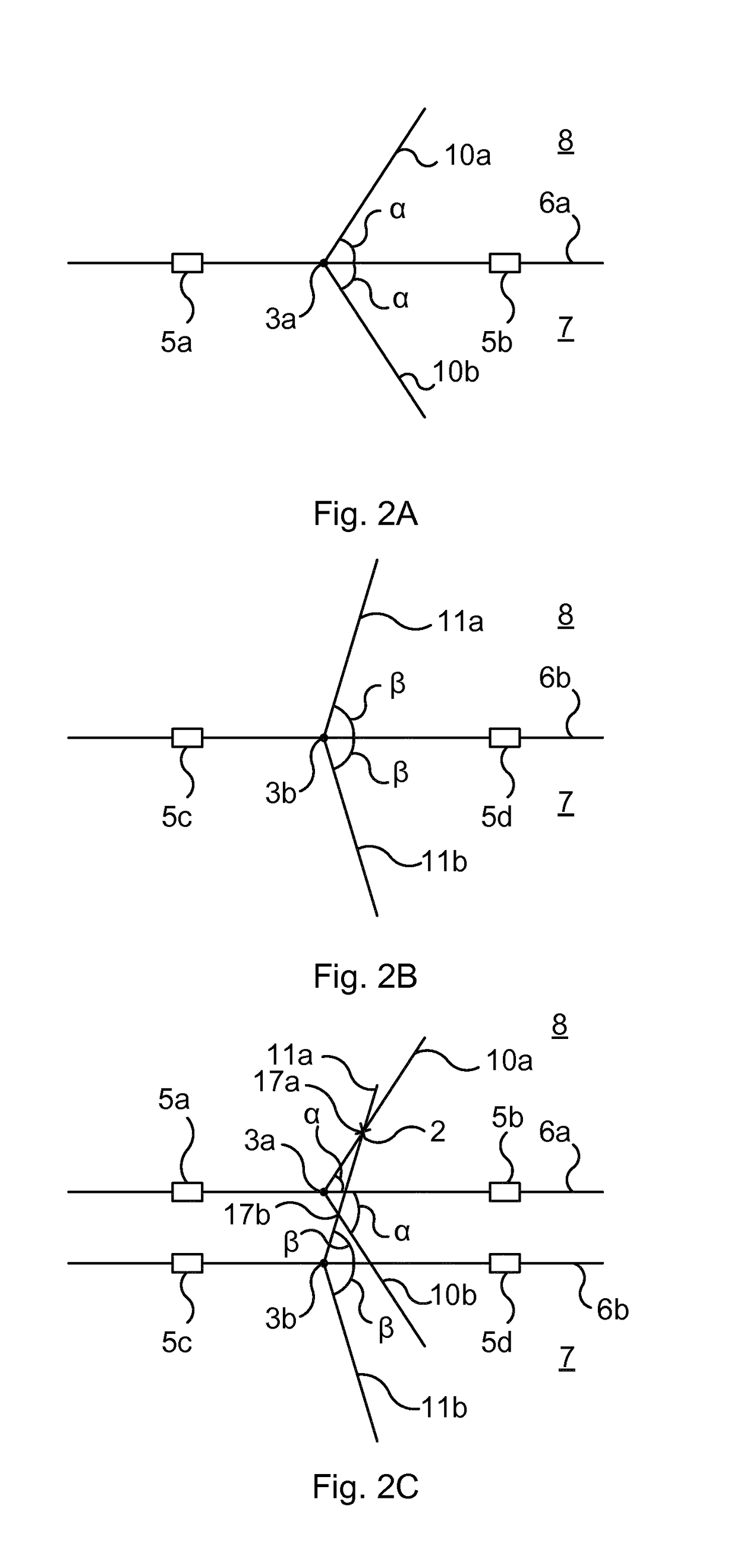Method, device, computer program and computer program product for determining whether a portable key device is located in an active area in relation to a barrier
a portable key and active area technology, applied in the field of portable key devices located in active areas in relation to barriers, can solve problems such as difficult manipulation of aoa, and achieve the effect of increasing the accuracy of determining
- Summary
- Abstract
- Description
- Claims
- Application Information
AI Technical Summary
Benefits of technology
Problems solved by technology
Method used
Image
Examples
Embodiment Construction
[0035]The invention will now be described more fully hereinafter with reference to the accompanying drawings, in which certain embodiments of the invention are shown. This invention may, however, be embodied in many different forms and should not be construed as limited to the embodiments set forth herein; rather, these embodiments are provided by way of example so that this disclosure will be thorough and complete, and will fully convey the scope of the invention to those skilled in the art. Like numbers refer to like elements throughout the description.
[0036]FIG. 1 is a schematic diagram showing an environment in which embodiments presented herein can be applied.
[0037]Access to a physical space 16 is restricted by a physical barrier 15 which is selectively unlockable. For instance, the barrier 15 can be a door, gate, hatch, window, etc. In order to unlock the barrier 15, an access control device 13 is provided. The access control device 13 is connected to a physical lock device 1,...
PUM
 Login to View More
Login to View More Abstract
Description
Claims
Application Information
 Login to View More
Login to View More - R&D
- Intellectual Property
- Life Sciences
- Materials
- Tech Scout
- Unparalleled Data Quality
- Higher Quality Content
- 60% Fewer Hallucinations
Browse by: Latest US Patents, China's latest patents, Technical Efficacy Thesaurus, Application Domain, Technology Topic, Popular Technical Reports.
© 2025 PatSnap. All rights reserved.Legal|Privacy policy|Modern Slavery Act Transparency Statement|Sitemap|About US| Contact US: help@patsnap.com



